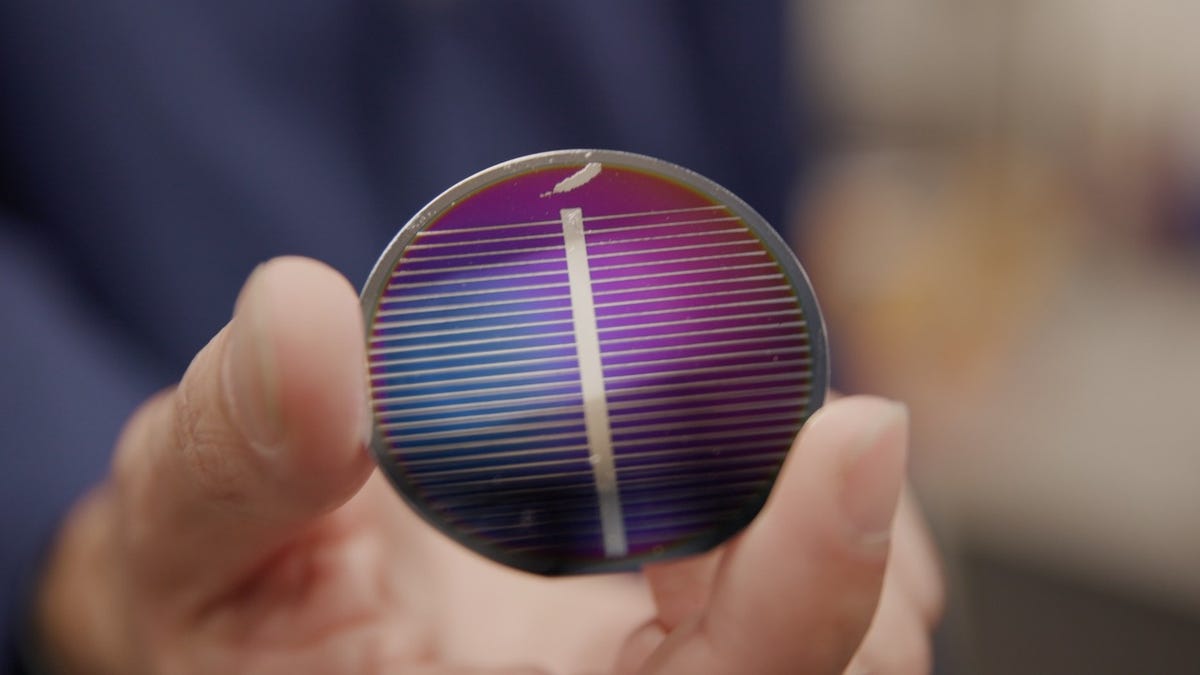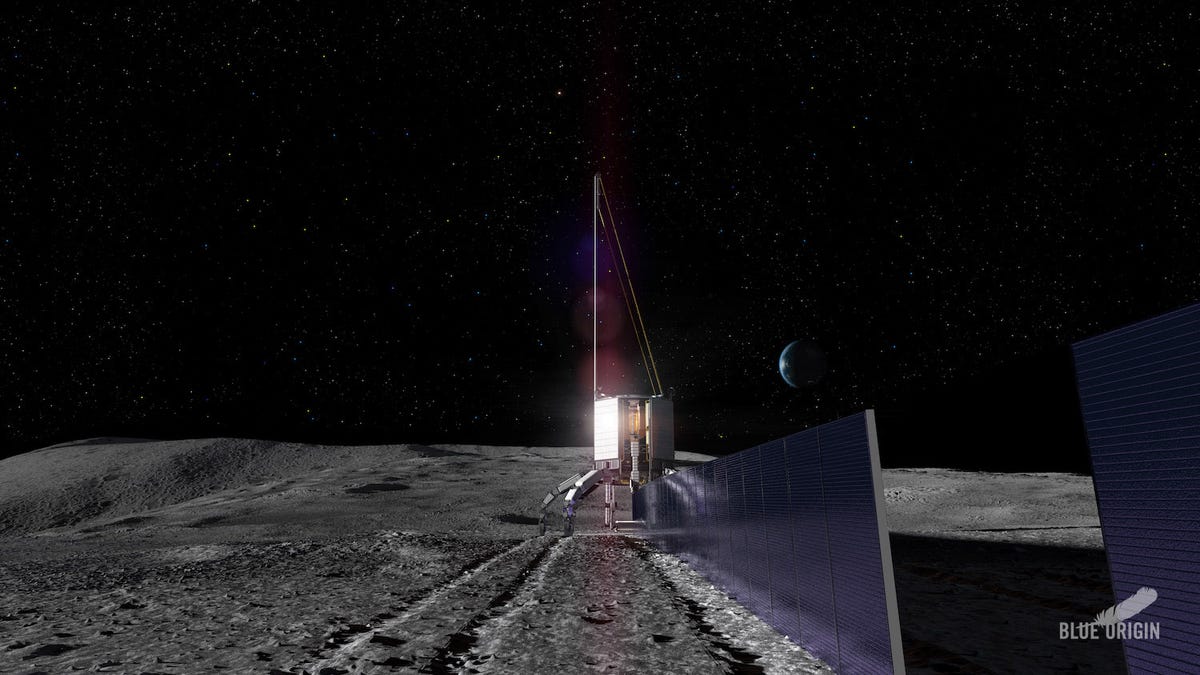
Blue Origin’s solar cell prototype is made entirely of materials extracted from lunar regolith simulant.
Blue Origin
With its Artemis program, NASA wants to do more than just touch boots on the moon and come home. It wants a sustainable human presence there. To pull that off, humanity will need to use local resources. That’s where Jeff Bezos-founded space company Blue Origin hopes to contribute with its Blue Alchemist solar project.
Blue Origin hasn’t reached Earth orbit yet, but it’s already planning ahead for life on the moon. In a statement last week, the company said it’s been developing “solar cells and transmission wire from regolith simulants” since 2021 and has now made a working solar cell prototype. Basically, this is about turning moon dust into solar power.
More space news
- NASA Picks Next-Generation Blue Origin Rocket for Mars Mission
- Blue Origin Rocket Experiences Fiery Anomaly During Mission Launch
Lunar regolith is the surface material found on the moon. It’s very different than what we think of as typical Earth soil, the sort of stuff you grow plants in. Lunar regolith is a mix of dust, rock chips, minerals and glass. A lunar regolith simulant is a stand-in for the real thing that’s designed to mimic the composition and properties of what’s on the moon.
To get the materials for the solar cell, Blue Origin used a combination of extreme heat and electricity.
“Using regolith simulants, our reactor produces iron, silicon and aluminum through molten regolith electrolysis, in which an electrical current separates those elements from the oxygen to which they are bound,” the company said. Silicon is a key ingredient for the solar cell, and this process creates an extremely pure version of silicon suitable for solar. Blue Origin says its method doesn’t require the toxic chemicals that are often used for silicon purification on Earth.
Enlarge Image
“Molten regolith electrolysis extracts iron, then silicon, and finally aluminum by passing a current through the molten regolith,” Blue Origin said. “The rising oxygen bubbles in one of our reactors show metals and metalloids being separated from oxygen.”
Blue Origin
The solar cell is covered with glass made from byproducts of the regolith electrolysis process. Blue Origin estimates solar cells made with this method could last for over a decade.
Blue Origin isn’t the only organization that wants to make moon dust useful. NASA is working on melting lunar regolith and turning it into oxygen — much like Blue Origin is doing. Oxygen is needed for human life support systems and also for powering future rocket launches from the moon. NASA is even studying the possibility of building an oxygen pipeline on the moon.
NASA has already backed Blue Origin as way to get future missions off this rock. The agency selected Blue Origin’s New Glenn rocket for a Mars spacecraft mission that could launch as soon as next year.

 Enlarge Image
Enlarge Image
A Blue Origin concept illustration shows its Blue Alchemist solar project on the moon working on making solar cells.
Blue Origin
Blue Origin’s vision of unlimited solar power on the moon is a long way from reality, but the working prototype solar cell shines a light on a path forward. “Although our vision is technically ambitious, our technology is real now,” the company said.
Why don’t we just make solar equipment here and send it to the moon? It’s expensive and difficult to ship gobs of gear to the lunar surface, so it makes sense to harness the resources that are already there. The same goes for future ambitions of human outposts on Mars. The moon could be a testbed for technologies that enable a sustainable human presence beyond Earth.
